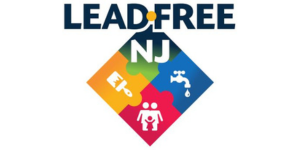Local Planning
In New Jersey, the power to plan and zone for development is largely in the hands of the state’s 565 municipalities.
The Municipal Land Use Law (NJSA 40:55D-1) grants towns the power to enact a master plan to set land-use priorities and direction, as well as adopt a zoning ordinance to dictate where and in what form development should happen, all with the purpose of protecting the health, safety and welfare of citizens. The local zoning administrator, as well as the volunteer planning and zoning board members, have the responsibility to interpret and enforce the community’s master plan and zoning ordinance. Because development impacts do not stop at municipal borders, it is important to provide communities with the necessary guidance, tools, laws and regulations to make sound land-use decisions that reflect the broader planning context.

While New Jersey is one of the most diverse states in the nation at the macro level, at the local level it is also one of the most segregated. The state has grown more demographically diverse over the last two decades, but most of its individual towns and neighborhoods are either predominantly white or predominantly non-white, with few places occupying the “diverse” range in between.

New Jersey is paradoxically one of the most diverse and most segregated states in the nation. The state has grown more diverse over the last two decades, with its non-Hispanic white percentage shrinking from two-thirds of the state population in 2000 to a little more than half as of the 2020 Census, with notable proportional growth among Hispanic and Asian-American communities. But New Jersey’s macro-level diversity often does not translate into integration at the local level, and places that are integrated at the local level don’t always stay that way.

New Jersey should follow Oregon’s and California’s lead and take advantage of the growing national momentum toward zoning reform, to at least begin a discussion about how such reforms might work in New Jersey.

New Jersey Future partnered with the Village of Ridgewood to develop an aging-friendly land use implementation plan, and now a graduate design studio class at the Bloustein School of Planning and Public Policy at Rutgers University is helping to move it along.
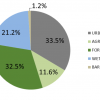
The New Jersey Department of Environmental Protection (DEP) recently released a 2015 update of its land use / land cover data set. The LU/LC dataset offers a periodic snapshot of how and where New Jersey both uses and preserves its land.
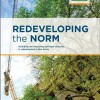
This report identifies strategies to lower both cost and risk in redevelopment projects, as redevelopment increasingly becomes the norm for accommodating growth in New Jersey. January 2016.
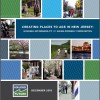
In this report, New Jersey Future analyzed housing affordability in each New Jersey municipality, to see where households headed by someone 65 or older have high housing costs. The places where housing cost burden is greatest fall into two groups: towns that are expensive for everyone, and towns that are dominated by larger, single-family housing stock. December 2015.
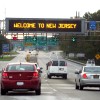
In this report, New Jersey Future and Smart Growth America analyzed per-capita road usage. The results show that places with the highest activity density have the lowest per-capita usage, suggesting per-capita road-maintenance costs can be reduced by even marginal increases in density. November 2015.

A one-hour webinar explaining a new, parcel-based tool that assesses financial vulnerability to coastal flooding and sea-level rise. Friday, May 15, 2015, noon – 1:00 pm.
An interim report, three years after Hurricane Sandy, on New Jersey Future’s groundbreaking local recovery planning manager program, including lessons learned and recommendations. October 2015.
See all New Jersey Future Blog posts and articles in this category »
Reports, Presentations and Testimony
- Creating Great Places to Age: Aging-Friendly Land-Use Implementation Plan for the Village of Ridgewood (Aug. 2020)
- NJM May 2019 stormwater utlities Van Abs
- New Jersey Future Resilient Coastal Communities Phase 2 Report 5-22-18
- New Jersey Future Resilient Coastal Communities Phase 2 Report appendices 5-22-18
- Creating Great Places to Age: Aging-Friendly Land-use Assessment For the Village of Ridgewood (Aug. 2018)
- Creating Great Places to Age: Land Use Analysis of Aging Friendliness (Westwood Borough, July 2018)
- Rename to: Creating Great Places to Age: Land Use Analysis of Aging Friendliness (Teaneck, Feb. 2019)
- Creating Great Places to Age: Land Use Analysis of Aging Friendliness (Somerdale, Jan. 2019)
- 02/01/2019: Comments on Phase 1 Stormwater Rule Amendment
- Trenton Transit Center Strategic Action Blueprint July 2018
- New Jersey Future Non-Contiguous Cluster Report August 2017
- Mystic Island HIA Report 6-7-16
- APA Conference Places To Age Best Practices
- New Jersey Future Resilient Coastal Communities Project Report Appendix 6
- New Jersey Future Resilient Coastal Communities Project Report Appendix 4
- New Jersey Future Resilient Coastal Communities Project Report Appendix 3 Figures
- New Jersey Future Resilient Coastal Communities Project Report 2017
- New Jersey Future Demographic Trends by Age September 2017
- Oxford Byway to Destination NJM June 2017
- New-Jersey-Future-Assessment-of-the-NJLIHTC-program
- New Jersey Future 2017 Gubernatorial Platform
- Little Egg Harbor Township Vulnerability Assessment Report 02-2015
- Strategic Recovery Planning Report Maurice River 05-2015
- Strategic Recovery Planning Report Commercial 12-2015
- League of Municipalities Article on Aging in Community April 2016
- New Jersey Future Redeveloping the Norm 01-16 (Intern Report)
- New Jersey Future Housing Affordability and Aging-Friendly Communities
- Housing Affordability and Aging-Friendly Communities Housing Cost-Burden Municipal Data by Municipality
- Housing Affordability and Aging-Friendly Communities Housing Cost-Burden Municipal Data by Cost Burden Rank
- fiscal-implications-roads-in-new-jersey
- NJFuture-In-Deep-10-15-WEB
- Sample Local Recovery Planning Manager Resolution of Engagement
- Sample Local Recovery Planning Manager Memorandum of Agreement
- Risk analysis public mtg presentation Tuckerton-Little Egg Harbor 4-14-15
- Strategic Recovery Planning Report Tuckerton 4-15-15
- Local Recovery Planning Manager Scope of Services Tuckerton-Little Egg Harbor 1-31-14
- Can We Depend on Our Water Infrastructure?
- 2014-11-18_Trenton Green Infrastructure Feasibility Study.compressed
- Sea Bright exposure analysis
- Trenton_Meeting_Summary_FINAL
- New Jersey Future Stormwater Utilities Report 9-14 (Intern Report)
- PINELANDS_WEB_8_4_14-1
- New Jersey Future Van Abs 2014 Pinelands Growth Area Water Assessment
- Agenda for Change
- 03/05/2014: Sandy Action Plan Amendment Planning Letter
- Creating Great Places To Age in New Jersey
- Creating Places To Age in New Jersey Municipal Best Practices
- Creating Places To Age in New Jersey municipal data
- Creating Places To Age Bergen-Passaic Supplement
- NJFuture Cluster Presentation I Open for Municipalities
- Social Innovation and Smart Growth 9-13 (Intern Report)
- Somerset County Investment Framework 1-13 (Intern Report)
- Targeting Transit -- New Jersey Future
- Innovation Districts as Economic Growth Strategy 9-12 (Intern Report)
- 05-2009 Smart Housing Incentives Act - Summary
- Case Studies of Non-Contiguous Clustering in New Jersey 04-12
- Cluster Presentation - NJ Farm Bureau 1-4-2012
- Financial Benefits of Density in Two New Jersey Downtowns 7-11 (Intern report)
- Assessment of Solar Siting in New Jersey 5-11 (Intern report)
- Route 1 Planning Through Partnerships
- ShapingNJ Community Pilot Meeting Overview 06-09-11
- Case Studies in Transfer of Development Rights 8-10 (Intern report)
- Transit-Oriented Development Workshop for HCDNNJ memb mtg 06-15-2011
- Case Study Hopewell Township 08-00
- A Citizen's Guide to Transit-Oriented Development









